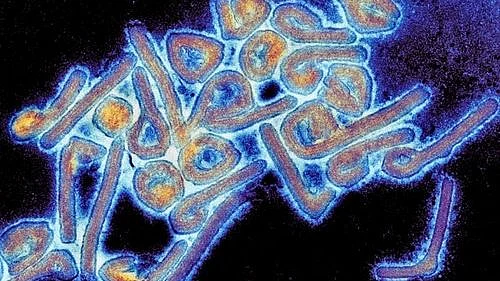Guinea on 2 August confirmed the death of a person infected with the Marburg virus. The World Health Organization (WHO) has confirmed that about 155 people, who came in contact with the deceased, have been isolated and are under 'active surveillance'.
WHO director-general Tedros Adhanom Ghebreyesus on Wednesday, 11 August, in a press meeting announced that though Marburg, a deadly cousin of the Ebola virus, is a very different virus from SARS-CoV-2, many of the elements of the response are the same, including isolation, tracing, and quarantining their contacts, reported Hindustan Times.
What is Marburg Virus? How does it spread? What are the symptoms? Should I be concerned? Here's everything we know.
What is the Marburg virus?
According to WHO, Marburg virus disease (MVD), formerly known as Marburg haemorrhagic fever, is a severe, often fatal illness in humans. This virus can cause severe viral haemorrhagic fever in humans.
It is classified in the the same family as the Ebola virus. Marburg is named after the city in Germany, where the outbreak first occurred in 1967.
How does it spread?
According to WHO, human MVD results from prolonged exposure to mines or caves inhabited by Rousettus bat colonies.
It spreads through human-to-human transmission via direct contact with the blood, secretions, organs, or other bodily fluids of infected people, and with surfaces and materials (eg bedding, clothing) contaminated with these fluids.
What are the symptoms of Marburg Virus Disease?
The virus has an incubation period of 2 to 21 days, according to WHO.
The symptoms include high fever, severe headache and severe malaise, muscle aches and pains.
By the third or the fourth day, severe watery diarrhoea, abdominal pain and cramps, nausea, and vomiting can begin.
In serious cases, death of the patient is likely to occur between 8 and 9 days after symptom onset, usually preceded by severe blood loss and shock.
How is it diagnosed?
Diagnosis of MVD can be difficult as the symptoms are very similar to infections such as malaria, typhoid fever, shigellosis, meningitis, and other viral haemorrhagic fevers.
According to WHO, confirmation that symptoms are caused by Marburg virus infection are made using the following diagnostic methods:
antibody-capture enzyme-linked immunosorbent assay (ELISA)
antigen-capture detection tests
serum neutralization test
reverse transcriptase polymerase chain reaction (RT-PCR) assay
electron microscopy
virus isolation by cell culture.
How can it be treated?
As of now, there are no vaccines available for MVD.
Supportive care such as rehydration with oral or intravenous fluids – and treatment of specific symptoms can improve the condition of the individual.
How can it be prevented?
According to WHO, it can be prevented or controlled if an outbreak happens by surveillance and contact tracing, a good laboratory service, safe and dignified burials, raising awareness and social mobilisation.
Risk reduction messaging should focus on several factors:
Reducing the risk of bat-to-human transmission.
Reducing the risk of human-to-human transmission in the community, if someone gets affected.
Communities affected by Marburg should make efforts to ensure that the population is well informed.
Outbreak containment measures include prompt, safe and dignified burial of the deceased.
Reducing the risk of possible sexual transmission.
(With Inputs from The World Health Organisation)
(At The Quint, we question everything. Play an active role in shaping our journalism by becoming a member today.)
